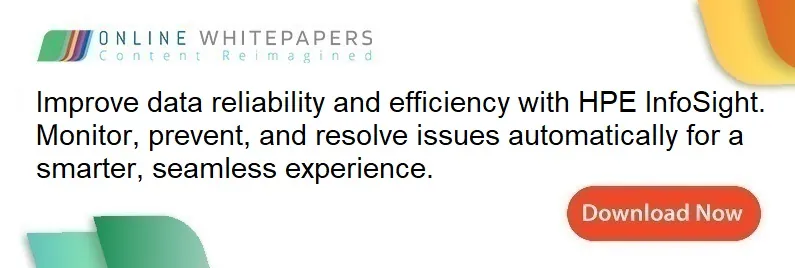Most marketers constantly seek ways to stay ahead of the curve and deliver more personalized, effective campaigns. Two powerful technologies have emerged as game-changers in this pursuit: predictive analytics and marketing automation. These tools offer unprecedented capabilities to enhance campaign efficiency, improve targeting, and boost overall marketing ROI. This blog post will explore how integrating predictive analytics with marketing automation can revolutionize your marketing strategies and drive better results.
What is Predictive Analytics in Marketing?
Predictive analytics is a branch of advanced analytics that uses historical data, statistical algorithms, and machine learning techniques to identify the likelihood of future outcomes. In marketing, predictive analytics helps forecast customer behaviors, preferences, and actions, allowing marketers to make data-driven decisions and tailor their strategies accordingly.
There are several types of predictive analytics models commonly used in marketing:
- Classification models: These help categorize customers into different segments based on shared characteristics.
- Clustering models: Used to group similar customers together for targeted marketing efforts.
- Time-series models: Predict future trends based on historical data, useful for forecasting sales or customer churn.
- Outlier detection models: Identify unusual patterns or behaviors that may indicate opportunities or risks.
At the core of predictive analytics are technologies like machine learning algorithms, big data processing, and statistical modeling. These components work together to analyze vast amounts of customer data and generate actionable insights.
The Basics of Marketing Automation
Marketing automation refers to the use of software and technologies to automate repetitive marketing tasks and workflows. This can include email marketing campaigns, social media posting, ad campaigns, and more. The primary goal of marketing automation is to increase efficiency, streamline marketing efforts, and improve customer engagement at scale.
Key tools and platforms commonly used for marketing automation include:
- Email Service Providers (ESP): For managing and automating email campaigns
- Customer Relationship Management (CRM) systems: To track and manage customer interactions
- Customer Data Platforms (CDP): For unifying customer data from various sources
By automating routine tasks, marketers can focus on strategy and creativity while ensuring consistent communication with their audience across multiple channels.
( Also Read: Using Predictive Analytics to Identify Trends )
How Predictive Analytics Enhances Marketing Automation
The integration of predictive analytics with marketing automation creates a powerful synergy that can significantly improve marketing outcomes. Here are some key benefits of this integration:
-
Personalized content delivery
Predictive models can analyze customer data to determine the most relevant content for each individual, allowing automation tools to deliver highly personalized messages.
-
Dynamic segmentation
Instead of static customer segments, predictive analytics enables real-time, behavior-based segmentation that adapts as customer preferences change.
-
Improved lead scoring
By analyzing historical data and customer behaviors, predictive models can more accurately score leads, helping sales teams prioritize their efforts.
-
Optimized timing
Predictive analytics can determine the best times to send marketing messages, increasing the likelihood of engagement.
-
Churn prediction
By identifying customers at risk of churning, marketers can proactively implement retention strategies through automated campaigns.
Key Components of Integrating Predictive Analytics with Marketing Automation
To successfully integrate predictive analytics with your marketing automation efforts, several key components need to be in place:
-
Data collection and integration
Gather accurate and diverse data from multiple sources, including customer interactions, purchases, website behavior, and social media engagement.
-
Data cleaning and preparation
Ensure your data is clean, organized, and formatted correctly to guarantee accurate predictions and insights.
-
Predictive modeling techniques
Choose appropriate modeling approaches based on your specific marketing goals and available data.
-
Integration with marketing automation platforms
Seamlessly connect your predictive analytics tools with your existing marketing automation software to enable real-time insights and actions.
-
Continuous learning and optimization
Implement systems for ongoing model training and refinement to maintain accuracy as market conditions and customer behaviors evolve.
Implementing Predictive Analytics in Marketing Campaigns
Now that we understand the components, let’s explore how to implement predictive analytics in your marketing campaigns:
-
Lead scoring
Use predictive models to assign scores to leads based on their likelihood to convert. This allows sales teams to focus on the most promising prospects and tailor their approach accordingly.
-
Demand generation and account targeting
Leverage predictive insights to identify potential customers or accounts that are most likely to be interested in your products or services.
-
Personalization
Utilize predictive analytics to customize marketing content, offers, and messaging based on individual customer preferences and behaviors.
-
Campaign evaluation
Employ predictive models to forecast campaign performance and make data-driven adjustments to optimize results.
 Audience Segmentation with Predictive Analytics
Audience Segmentation with Predictive Analytics
Predictive analytics takes audience segmentation to the next level by enabling more granular and dynamic groupings. Here’s how:
-
Behavioral segmentation
Group customers based on predicted future behaviors rather than just historical actions.
-
Preference-based segmentation
Use predictive models to understand and group customers according to their likely preferences, even if they haven’t explicitly stated them.
-
Lifecycle stage prediction
Segment customers based on their predicted position in the customer lifecycle, allowing for more targeted messaging and offers.
By leveraging these advanced segmentation techniques, marketers can create highly targeted campaigns that resonate with specific audience groups, improving engagement and conversion rates.
Real-Time Data Tracking and Performance Measurement
To maximize the benefits of integrating predictive analytics with marketing automation, it’s crucial to implement robust systems for real-time data tracking and performance measurement:
-
Set up real-time data pipelines
Ensure that your predictive models are constantly fed with the latest customer data to maintain accuracy.
-
Define and track relevant KPIs
Identify the most important metrics for your business and set up automated tracking and reporting.
-
Implement A/B testing
Use predictive analytics to inform A/B tests and quickly identify winning strategies.
-
Create feedback loops
Establish processes for continuously feeding campaign performance data back into your predictive models for ongoing refinement.
Overcoming Challenges in Integration
While the benefits of integrating predictive analytics with marketing automation are significant, there are challenges to overcome:
-
Data privacy concerns
Ensure compliance with data protection regulations like GDPR and CCPA by implementing robust data governance practices.
-
Integration with existing tools
Choose predictive analytics solutions that offer seamless integration with your current marketing automation stack.
-
Staff training
Invest in training your team to understand and effectively use predictive analytics insights in their marketing efforts.
-
Avoiding over-reliance on automation
Strike a balance between data-driven decisions and human creativity and intuition in your marketing strategies.
( Also Read: The Role of Predictive Analytics in Marketing )
Tools and Technologies for Integration
Several tools and technologies can facilitate the integration of predictive analytics with marketing automation:
-
Pecan AI
Offers automated predictive analytics and machine learning for marketing and sales teams.
-
Segment
Provides customer data infrastructure to collect, clean, and control customer data for predictive modeling.
-
Google Analytics 4 (GA4)
Includes built-in machine learning capabilities for predictive metrics and audience creation.
-
Voyantis
Specializes in predictive growth solutions for digital businesses.
-
Adobe Analytics
Offers advanced analytics capabilities, including predictive modeling, as part of the Adobe Experience Cloud.
-
IBM Watson
Provides AI-powered predictive analytics solutions for marketing and customer engagement.
-
SAS Marketing Automation
Combines advanced analytics with marketing automation capabilities for data-driven campaigns.
Case Studies: Successful Integration of Predictive Analytics in Marketing Automation
To illustrate the power of integrating predictive analytics with marketing automation, let’s look at a couple of brief case studies:
-
E-commerce retailer
A large online retailer implemented predictive analytics to forecast customer lifetime value and churn probability. By integrating these insights with their marketing automation platform, they created targeted retention campaigns for high-value customers at risk of churning, resulting in a 25% reduction in churn rate and a 15% increase in customer lifetime value.
-
B2B software company
A software-as-a-service (SaaS) provider used predictive lead scoring integrated with their marketing automation system to prioritize leads for their sales team. This integration led to a 35% increase in conversion rates and a 20% reduction in sales cycle length.
These examples demonstrate how the synergy between predictive analytics and marketing automation can drive tangible business results across different industries and business models.
Future Trends in Predictive Analytics and Marketing Automation
As technology continues to evolve, we can expect to see several exciting developments in the field of predictive analytics and marketing automation:
-
Increased use of AI and machine learning
More sophisticated algorithms will enable even more accurate predictions and personalized marketing experiences.
-
Real-time predictive analytics
Advances in processing power will allow for instantaneous predictions and actions based on live customer data.
-
Enhanced natural language processing
Improved NLP capabilities will enable better analysis of unstructured data like customer reviews and social media posts.
-
Greater integration with emerging channels
Predictive analytics will be applied to new marketing channels like virtual and augmented reality experiences.
-
Ethical AI and explainable predictions
As the use of AI in marketing grows, there will be an increased focus on creating transparent and ethically sound predictive models.
Best Practices for Continuous Optimization
To ensure long-term success with your integrated predictive analytics and marketing automation efforts, consider these best practices:
-
Regularly update your models
Retrain your predictive models periodically to account for changing market conditions and customer behaviors.
-
Foster a data-driven culture
Encourage your marketing team to base decisions on data and predictive insights rather than gut feelings alone.
-
Collaborate across departments
Work closely with IT, data science, and sales teams to ensure a holistic approach to predictive marketing.
-
Stay informed about new technologies
Keep abreast of the latest developments in predictive analytics and marketing automation to maintain a competitive edge.
-
Prioritize data quality
Continuously monitor and improve the quality of your data to ensure accurate predictions and effective automation.
Final Thought
Integrating predictive analytics with marketing automation represents a significant leap forward in marketing capabilities. By leveraging the power of data-driven predictions and automated execution, marketers can create more targeted, personalized, and effective campaigns that drive better results and improve ROI.
As we’ve explored in this blog post, the benefits of this integration are numerous, from improved lead scoring and segmentation to more personalized content delivery and optimized campaign performance. While there are challenges to overcome, the potential rewards make it a worthwhile investment for forward-thinking marketing teams.
By embracing these technologies and following best practices for implementation and continuous optimization, marketers can position themselves at the forefront of the industry, ready to meet the evolving demands of today’s customers and drive business growth in an increasingly competitive landscape.
The future of marketing lies in the intelligent application of data and automation. By taking steps to integrate predictive analytics with your marketing automation efforts today, you’ll be well-positioned to succeed in the data-driven marketing landscape of tomorrow.





